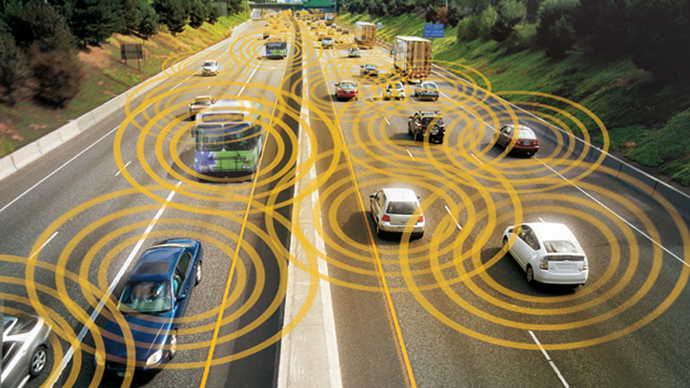The United States Department of Transportation is taking the next step towards creating a “vehicle-to-vehicle” communications system that will allow light autos on the road to receive and broadcast critical information to one another.
Last week, the DOT’s National Highway Traffic Safety Administration, or NHTSA, published an “advance notice of proposed rulemaking” in the Federal Register announcing the department’s intention to move forward with plans that officials believe could save thousands of lives.
“By warning drivers of imminent danger, V2V technology has the potential to dramatically improve highway safety,” David Friedman, NHSTA’s deputy administrator, said in a statement announcing the rulemaking, according to FedScoop. “V2V technology is ready to move toward implementation and this report highlights the work NHTSA and DOT are doing to bring this technology and its great safety benefits into the nation’s light vehicle fleet.”
Earlier this year, US Transportation Secretary Anthony Foxx said that V2V technology “represents the next generation of auto safety improvements,” and is an appropriate next step after safety belts and air bags.
"By helping drivers avoid crashes, this technology will play a key role in improving the way people get where they need to go while ensuring that the US remains the leader in the global automotive industry,”Foxx said in February.
Now after months of research, the NHTSA says they’ve completed “a very preliminary estimate of the costs of V2V and the benefits,” and are hoping to receive more comments in order to develop an effective proposal to be submitted at a later time advocating for the mandatory use of the technology.
According to a technical report released by the NTSA, the V2V system would make the roads safer by creating “highly accurate information” using in-vehicle data that is then sent to other cars as a “Basic Safety Message.”
"In addition, it can process the content of received messages to provide advisories and/or warnings to the driver of the vehicle in which it is installed,” the report reads.
Since the details that would be delivered contain vehicle-specific information, however, privacy advocates may soon object to the plans, as they’d put data like speed and direction in the hands of other drivers, including perhaps police cars..
"For example," part of the technical report reads, "when a DSRC unit sends out a BSM, the BSM needs to: Contain the relevant elements and describe them accurately (e.g., vehicle speed; GPS position; vehicle heading; DSRC message ID, etc.).”
“What NHTSA envisions mandating will not control people's cars but create a uniform communication system built into all vehicles that will give automobile manufacturers the opportunity to equip their products with warning systems that alert drivers to potential accidents — such as one that might be caused by cross traffic at a blind intersection,” opined CNS News reporter Terence P. Jeffrey.
According to the NTSA, installing V2V transmitted in automobiles could cost only $350 by 2020, and the system could save thousands of lives by alerting drivers of up-to-the-second actions of other people on the road, like those who may be running red lights or driving at dangerous speeds.
That type of data collection wouldn’t be anything new for some cars, however, with RT having reported previously that 96 percent of the cars mass-produced during the last year were manufactured with small “black box” surveillance devices that log immense details every time an engine is turned on.
“There’s not so much privacy concerns as actual threats to privacy,” Khaliah Barnes of the Electronic Privacy Information Center told CBS News last year. “These machines collect lots of data, and right now there are no federal laws that safeguard this information. And so what happens is there is an increasing market for this information. Law enforcement wants to see this information. Insurance companies, as well as private citizens involved in litigation.”
Even auto execs have acknowledged as much, with one Ford senior executive having to apologize earlier this year after boasting at an industry trade show: “We have GPS in your car, so we know what you're doing.”
“Safety is our top priority, and V2V technology represents the next great advance in saving lives,” added Transportation Sec. Foxx. “This technology could move us from helping people survive crashes to helping them avoid crashes altogether.”

